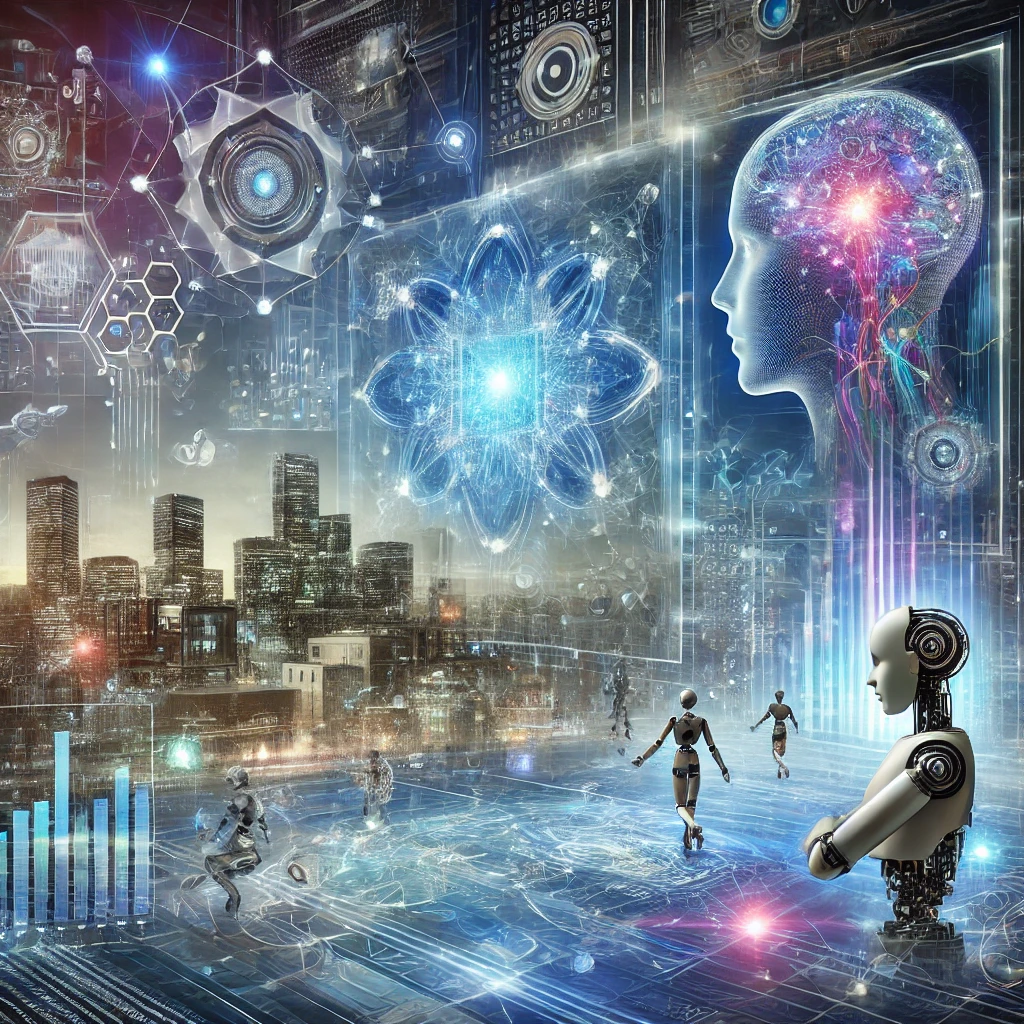The Age of AI - Insights on the Future of Artificial Intelligence

Artificial Intelligence (AI) has rapidly evolved from a niche academic discipline into a powerful force reshaping industries and societies. As AI continues to advance, several key trends are expected to dominate the landscape in the coming years, with profound implications for various sectors and the world at large.
The Three Pillars of AI's Next Wave
Three key trends are set to drive the next phase of AI: large context windows, AI agents, and text-to-action models. These developments represent foundational shifts that will significantly impact industries and society.
-
Large Context Windows: AI models are becoming increasingly capable of processing larger amounts of information in a single context, akin to having an expansive short-term memory. This capability allows AI to analyze and summarize vast quantities of text, such as reading 20 books and providing coherent insights, in a manner similar to human cognitive processes. This ability to handle large context windows is expected to revolutionize how we interact with AI, making it more responsive to complex queries and tasks.
-
AI Agents: These systems are designed to perform tasks autonomously, learning from interactions and adapting their behavior over time. AI agents are already being developed to conduct sophisticated tasks, such as discovering new chemical compounds by integrating knowledge and experimental results. The potential for AI agents to automate complex workflows across industries, from pharmaceuticals to finance, is enormous.
-
Text-to-Action Models: These models go beyond generating text by translating natural language inputs into executable actions. For instance, an AI could be instructed to create a new social media platform, mimicking TikTok, and within seconds, it could generate the necessary code, customize user preferences, and even modify its approach if the initial attempt doesn’t go viral. This capability suggests a future where AI systems can rapidly prototype and deploy digital solutions, significantly reducing time to market and lowering costs.
The Competitive Landscape: The Rise of AI Giants
The increasingly competitive nature of AI development is evident, with only a few companies likely to dominate the frontier models driving the next phase of AI. The massive investments required—ranging from $10 billion to over $100 billion—to stay at the cutting edge of AI technology highlight the concentration of power in the hands of a few tech giants. Companies like OpenAI, Anthropic, and Google are leading the charge, while the gap between these leaders and others appears to be widening.
One critical factor in this competition is the hardware infrastructure, particularly the dominance of NVIDIA in AI-optimized GPUs. The ecosystem built around NVIDIA’s CUDA architecture, which has been optimized over a decade, gives it a significant advantage that is hard to replicate. This reliance on specialized hardware underpins the need for massive investments in data centers and energy resources.
The Geopolitical Implications of AI
AI’s impact extends beyond the commercial sector into the geopolitical realm, with significant implications for national security and global power dynamics. Continuing to invest heavily in AI and related technologies is crucial for maintaining technological superiority, especially over rivals like China. The U.S. currently enjoys a lead in advanced semiconductor technologies, which are critical for AI, but this advantage is not guaranteed to last indefinitely.
Ethical and regulatory challenges posed by AI are also of paramount importance. Ensuring that AI systems behave safely and align with human values, particularly as they become more autonomous and capable of making decisions without human oversight, remains a significant challenge. A robust regulatory framework is needed to manage these risks, though balancing innovation with safety is no easy task.
The Future of Work and Education in the Age of AI
As AI systems become more capable, they will inevitably change the nature of work and education. AI is expected to significantly boost productivity, particularly in high-skill tasks that require complex decision-making. However, jobs requiring less judgment could be at risk of automation.
In education, AI-powered tools are likely to become essential partners in learning. For instance, computer science students might work alongside AI systems that help them learn programming more effectively, providing personalized feedback and assistance. This shift could fundamentally change how subjects are taught and learned, making education more interactive and tailored to individual needs.
Conclusion: A New Era of AI-Driven Innovation
The advancements in context windows, AI agents, and text-to-action models will likely lead to unprecedented levels of automation and innovation. However, this also raises important questions about the concentration of power, the ethical use of AI, and the societal impact of these technologies.
As AI’s influence continues to grow, the challenge for policymakers, technologists, and society at large will be to harness these advancements in ways that maximize their benefits while mitigating potential risks. The Age of AI is upon us, and how we navigate it will determine the future trajectory of human progress.